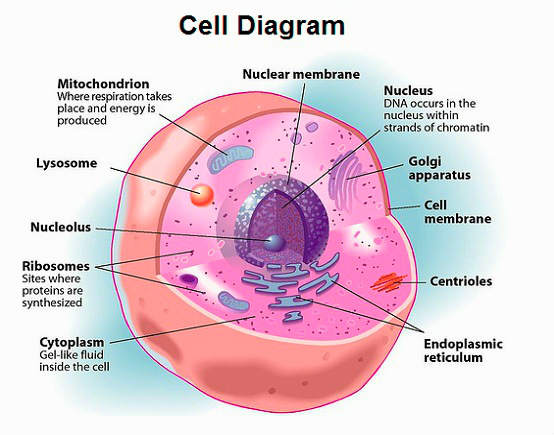Cell diagram: Human cell as most other animal cells make up the structure of the body. Cell diagram below is representative of a typical human cell responsible for carrying out various bodily functions and processing nutrients into energy used to sustain itself. The diagram shows the following elements: nucleus, membrane, ribosomes, lysosome, cytoplasm and others. Now lets explain what each of the cell parts is responsible for.
Cytoplasm is a part of the cell filled with cytosol liquid surrounding the nucleus. The nucleus is the center of the cell and acts as its control unit responsible for cell growth, division and maturity. Nuclear envelope is the membrane that surrounds the nucleus protecting the DNA from the rest of the cell.
The outside of the cell is protected by the plasma membrane. This membrane allows for passing of the nutrients and waste. An organ that ensures energy from nutrients can be consumed by the cell is called Mitochondria. The Golgi apparatus ensures molecules processed by the endoplasmic reticulum can be passed through the cell.
Peroxisomes and Lysosomes are responsible fore recycling of the worn-out cell parts while also breaking down bacteria and toxins. The cell diagram below lists various cell parts.


